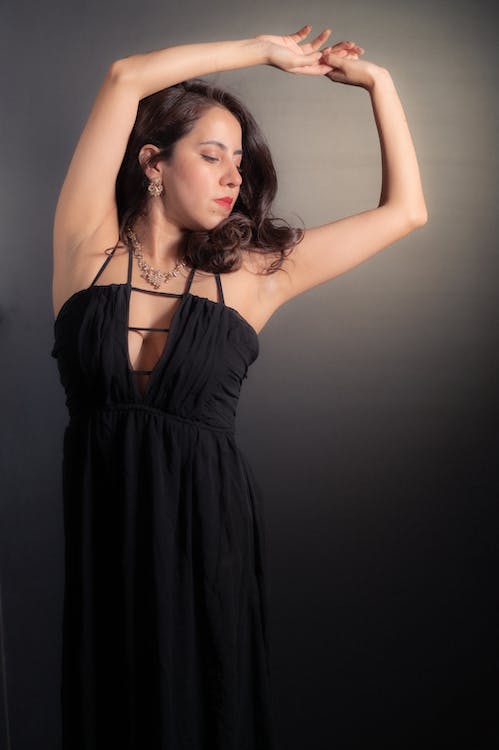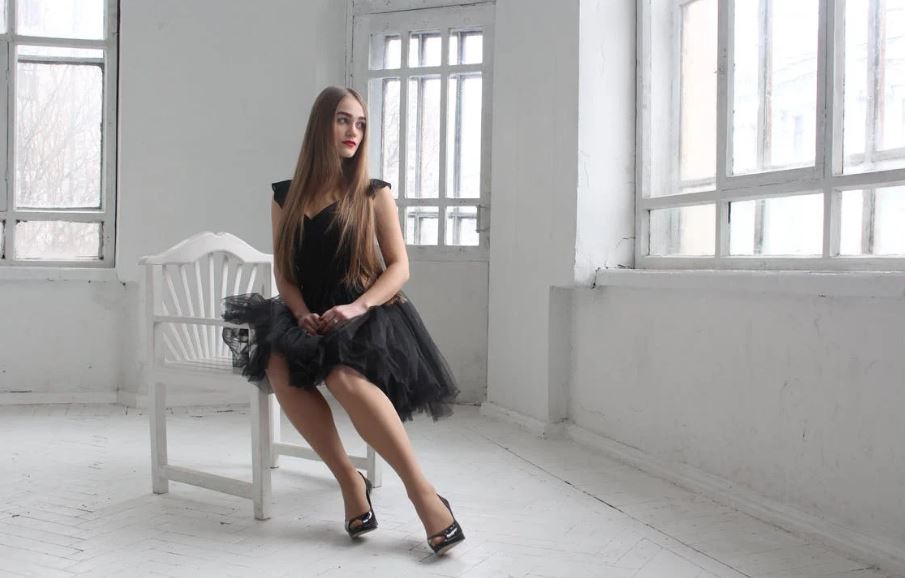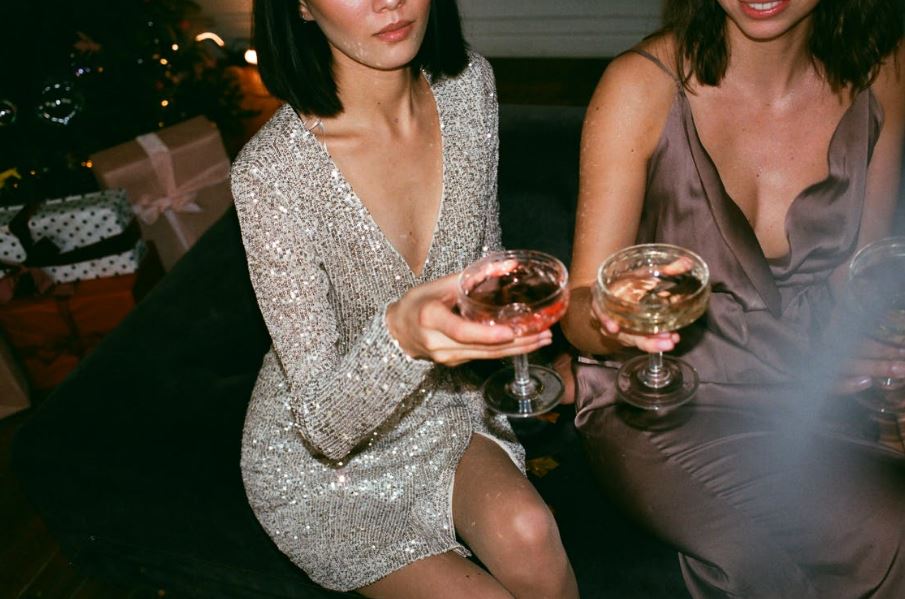If there were ever a dress style that could be characterized as fashion’s seductress, a bias cut dress would be a strong contender. You can trace its origins to ancient Greece and Egypt, where the fabric was swathed across the body and fastened with jewelry.
Moving forward to the nineteenth century, historians credit Madeline Vionnet as one of the pioneers of this provocative dress that emphasizes the body’s natural form. A type of dress in defiance of the rigid corsets of the period, which had a propensity to distort a woman’s body – the stuff we do for fashion!
Its popularity rose alongside Art Deco in the 1920s; it’s worth noting that a bias cut dress for evening or day wear, with its effortless elegance, is still as highly desired today as it was then. So, what exactly is a bias cut dress, and what makes it so appealing?
What Is a Bias Cut Dress?
A bias cut dress is cut “on the bias,” which means diagonally. Clothing cut on the bias is made of striped fabric so that the stripes go together in a “V,” whether right side up or upside down. Some dresses and nightgowns are made in this manner as well.
Created in 1927 by fashion designer Madeleine Vionnet, this cut emphasized women’s natural curves through drape and fabric choice. Unlike other popular fashion styles, the bias cut sought to draw attention to curves rather than hide them.
Bias cut dresses look very different from regular garments because they’re cut diagonally, even when the same basic shape or pattern is used. They cling to a lady’s curves more than traditionally cut clothing, giving dresses and nightgowns the reputation of being sexier than typically cut garments. Many women appreciate the graceful, delicate flow of a well-crafted bias cut skirt or dress.
Bias cut dresses are more tricky to sew than regular garments due to the diagonal fall of the fabric. If the garment is not constructed properly, the hems and seams can bunch and twist instead of lying flat against the wearer’s body. A few guidelines will ensure that your clothing looks as it should.
Making a Dress with a Bias Cut
The most important aspect of sewing a bias cut dress is remembering that the fabric will stretch differently than fabric cut normally. Some seamstresses advise tacking the garment together and hanging it for one to two days before finalizing the seams. This allows the fabric to stretch naturally and aids in the smoothing of your seams.
Always try on the garment before sewing the seams to ensure it exactly fits how you want it to.
When sewing seams on your garment, go slowly and let the fabric take its natural shape instead of pulling it taut as you pry it through the sewing machine. It is best to sew the seams in short bursts, letting the fabric relax and hold its natural shape before proceeding.
Allow the fabric to hang after the seams have been stitched before hemming the bottom or sleeves. This will make the garment fall naturally and keep the hems straight and smooth. When ironing the hem, instead of moving the iron sideways along the hem as you would with a regular cut garment, move the iron along the bias line.
Another method is to hang the bias-cut dress on a dress form rather than a hanger. A dress form will help the garment stretch and fall as it would on your body, creating a shape that hanging straight from a hanger will not.
It’s also worth noting that a bias cut dress necessitates more fabric than a regular cut garment because you must spin the pattern diagonally on the fabric. Although the fabric scraps may appear a waste, once you feel and see the beauty of the bias cut dress, you will know it was well worth the extra cost and effort!
Why Cut on the Bias?
Trimming on the bias imparts unique properties to woven fabrics. It essentially allows the fabric to have natural stretch, removing the need for a lot of construction and shaping typically required for woven fabrics.
However, keep in mind that as the bias grain stretches, the width of your garment decreases. The fabric’s fluidity allows it to mold to your body and drapes beautifully.
While bias cut dresses and tops are elegant and beautiful, it’s important to note how difficult it is to sew bias fabric. Here are a couple of ground rules to remember when sewing bias garments and creating patterns:
- Remember that bias cut fabric drops, so if your pattern’s center front length is 90cm, it’s a solid bet that your garment will be longer.
- If you cannot toile in the correct fabric, baste the garment together roughly and hang it on a stand for 24 hours before proper stitching.
- Always toile in the right fabric and adjust the pattern accordingly, never assuming how much the fabric will drop.
- Avoid sewing seams of drastically different grains together; instead, stitch straight seams to straight seams and bias seams to bias seams.
- Finally, bias seams should meet on opposite bias grains, which is a tricky concept to explain, so you can look for a diagram to help.
Softer fabrics are traditionally used for bias garments. Still, it’s also usual in tailoring to put the under the collar on the bias to allow for ease and natural movement around the neck. Use the bias grain on whatever pattern piece requires molding or natural movement.
Here are some fabrics that respond well to bias cutting:
- viscose
- silk
- crepe de chine
- crepe
- satin backed crepe
- satin
- chiffon
- georgette
The bias cut is formed when a fabric is cut at a diagonal angle. This technique takes advantage of the bias’s greater stretch, which raises the prominence of the body curves and lines while allowing the garment to drape softly. When done correctly, this bias cut is highly flattering.
In fashion, the late 1920s and, especially, the 1930s are remembered as years of body-hugging, unabashedly seductive silhouettes. These are the years of the femme fatales when divas like Bette Davis and Jean Harlow became models of strong and captivating femininity. Their celebrity stemmed from the dresses they were immortalized in, both on and off the screen.
Aside from the bias cut dress, here are four other amazing dresses for women to try!



